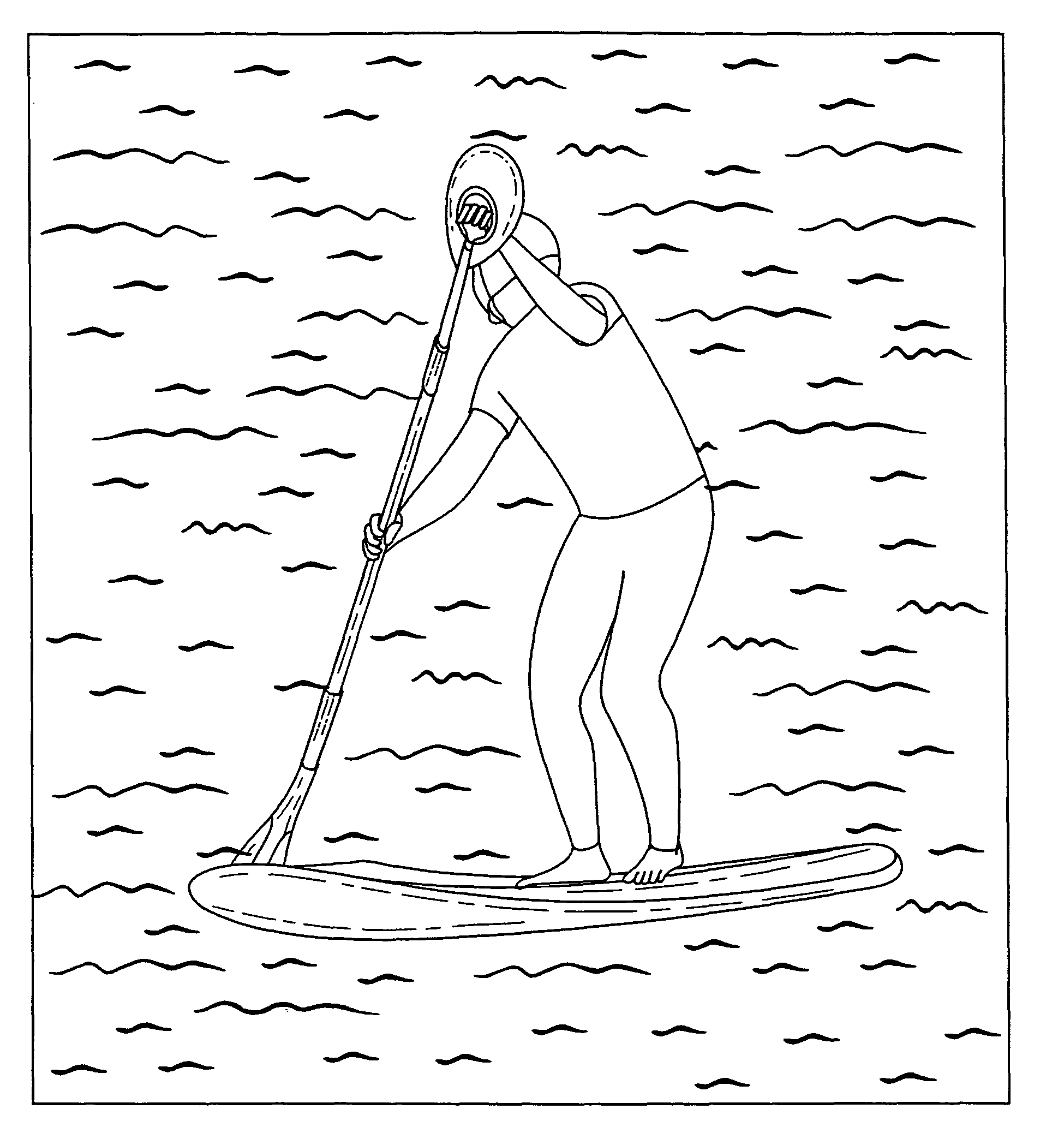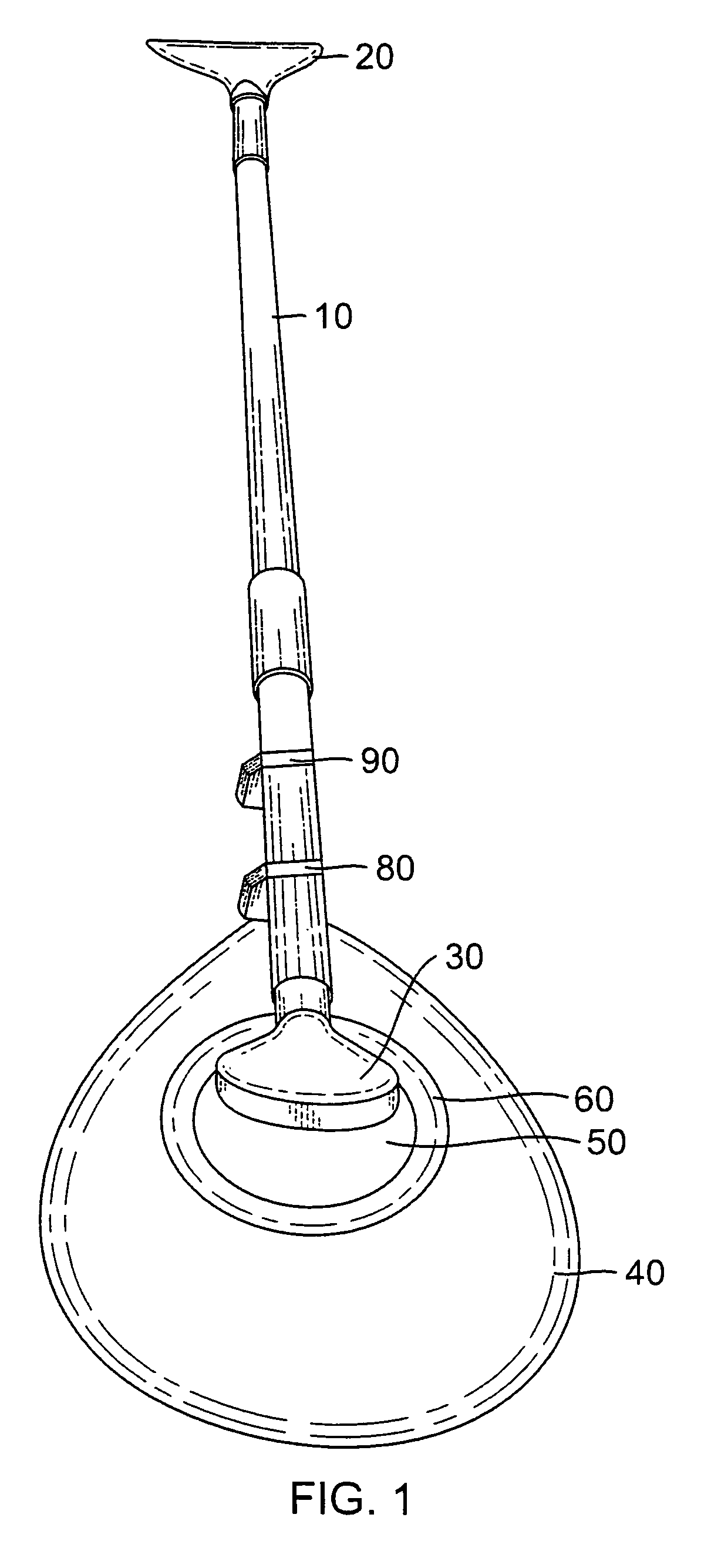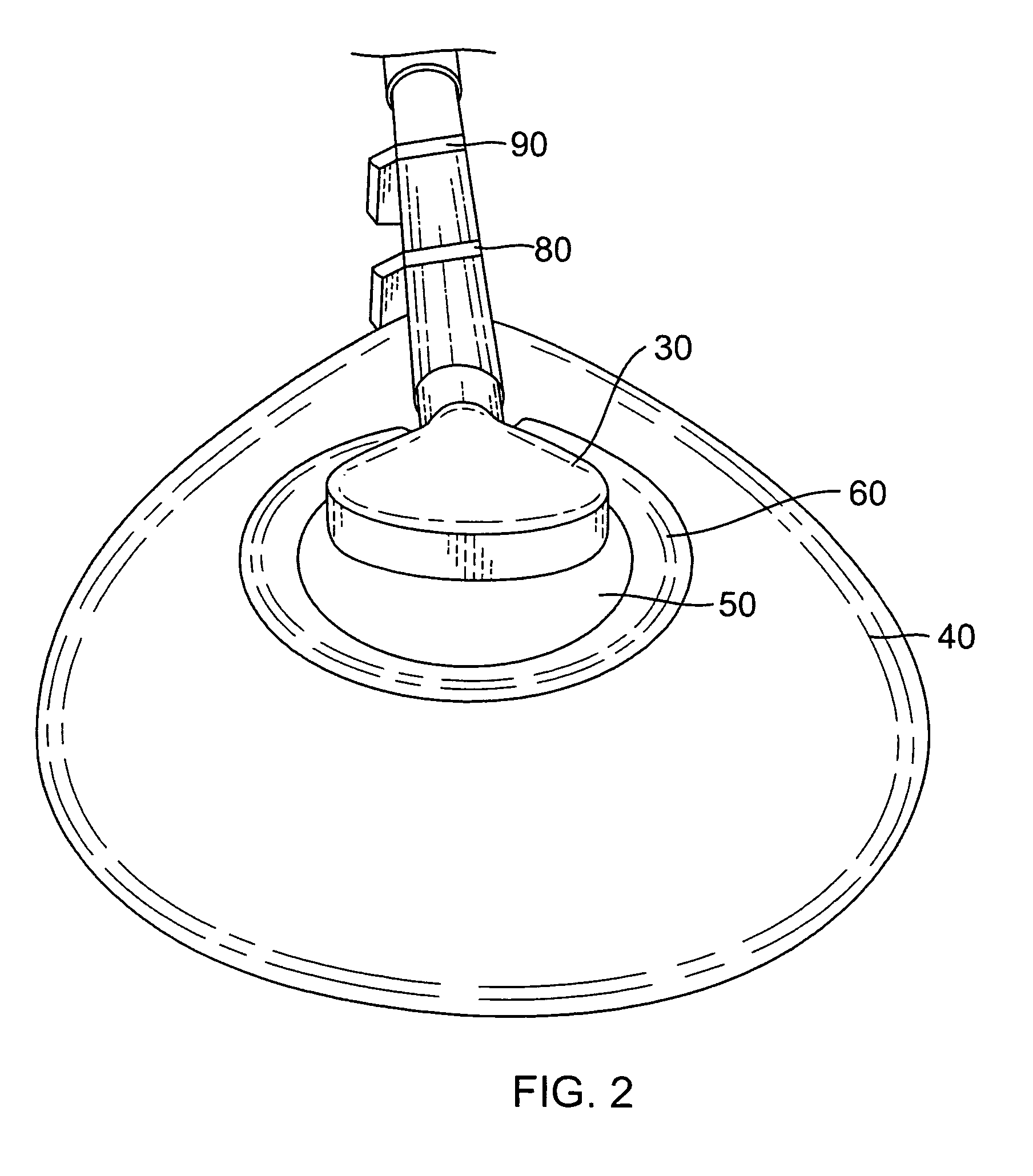Paddle blade that allows use of a handle and/or paddle for any way paddling
a paddle blade and handle technology, applied in waterborne vessels, marine propulsion, vessel construction, etc., can solve the problems of inefficiency of using a single paddle blade, slow paddling speed, and inability to use a paddle handle in any way, and achieve the effect of simple and structural way, easy attachment and simple structur
- Summary
- Abstract
- Description
- Claims
- Application Information
AI Technical Summary
Benefits of technology
Problems solved by technology
Method used
Image
Examples
first embodiment
[0053]Referring to FIG. 1, there is a closeup view of one alternative embodiment of the present invention. Referring to FIG. 2, the entire embodiment is disclosed. Specifically, there is a shaft 10 and on one end of the shaft is a paddle 20 which is a conventional paddle that is typically offset from the shaft 10 at a certain angle. At the other end of the shaft 10 is a handle 30. This is typically the way a standup paddle is formed. The present invention in the first embodiment is to include a second paddle 40 with an open recess 50 and preferably a molding or barrier 60 so that there is a cushioning between a person's hand when the person grasps the handle 30 and they will not be cut by the interior of the newly added paddle 40. The paddle can be affixed to the shaft by means such as hose clamps 80 and 90. This is just one method by which the paddle can be attached to the shaft. Referring to FIG. 3, the present invention paddle 40 and its opening 50 is shown having a elongated sem...
second embodiment
[0057]The second embodiment which is shown in FIGS. 6 through 9 essentially has a shaft 110 and takes advantage of current designs of paddles 140 where the paddles 140 are offset relative to the shaft 110 by a certain angle “A” which by way of example only can be 14 degrees but it can also be in the range of 10 to 25 degrees. The present invention is to cut two slits into the paddle on either side of the elongated semi-open shaft mating member 170 into which the shaft 110 will fit and then have a mating collar 150 which also has a pair of slits 182 and 184 that respectively align with the slits 150 and 152 in the paddle and a mating section 186 which fits over the shaft 100 and then have a fastening mechanism 190 such as a velcro strap by which the paddle 140 handle is retained on the shaft 110. The paddle 140 has an interior surface 142 facing the handle 130 and an exterior surface 144. It will be appreciated that mating velcro straps are just one embodiment and a belt or any other...
PUM
 Login to View More
Login to View More Abstract
Description
Claims
Application Information
 Login to View More
Login to View More - R&D
- Intellectual Property
- Life Sciences
- Materials
- Tech Scout
- Unparalleled Data Quality
- Higher Quality Content
- 60% Fewer Hallucinations
Browse by: Latest US Patents, China's latest patents, Technical Efficacy Thesaurus, Application Domain, Technology Topic, Popular Technical Reports.
© 2025 PatSnap. All rights reserved.Legal|Privacy policy|Modern Slavery Act Transparency Statement|Sitemap|About US| Contact US: help@patsnap.com



